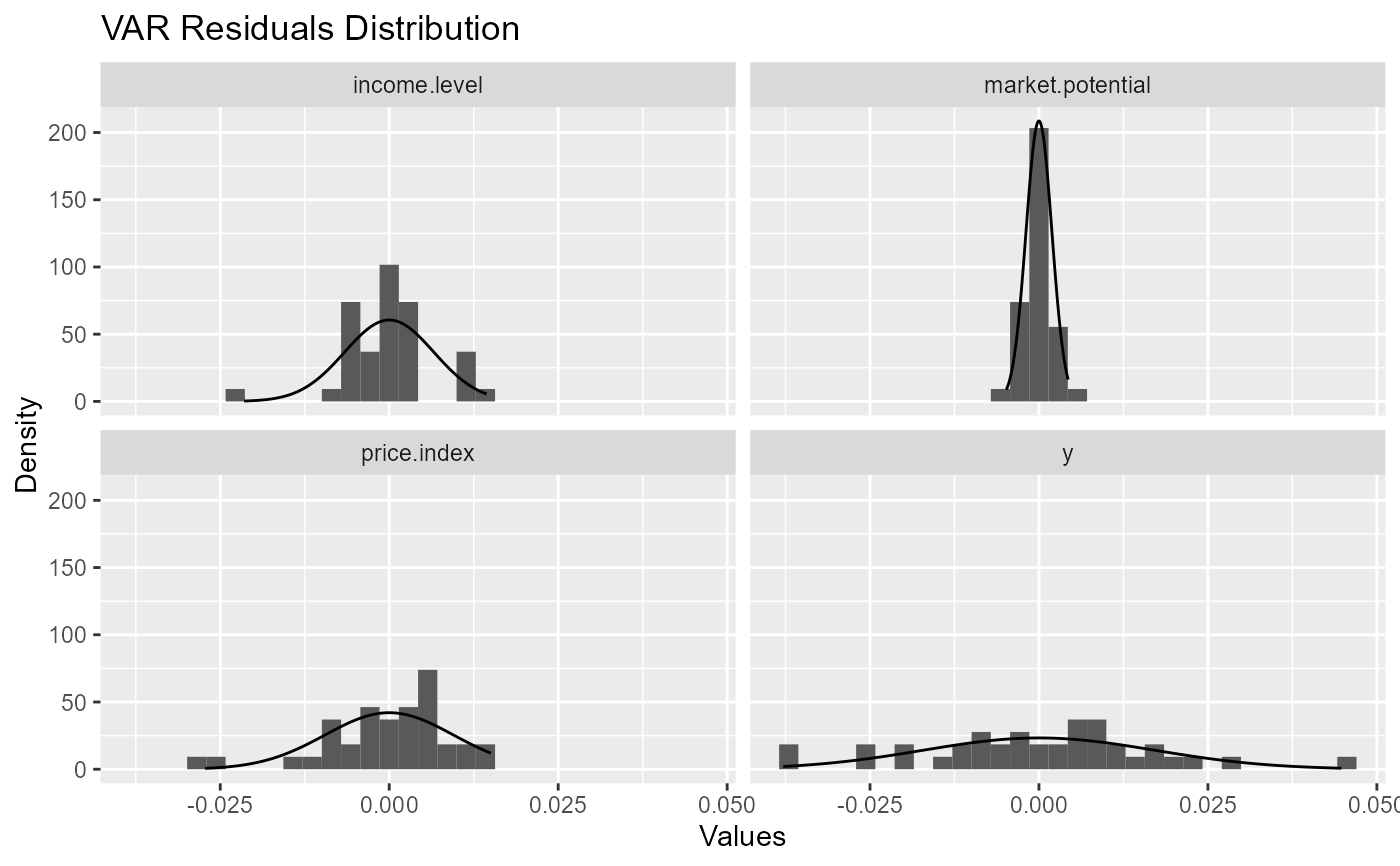Plots the histogram of the residuals of a VAR model, or of the variables in a dataset, possibly overlapped with a normal curve.
Arguments
- x
Either a "varest" object for plotting the residuals, or an dataset (object coercible to data.frame) with numeric variables.
- series
A character vector with series (variables) to consider. Defaults to all (
NULL).- plot_normal
Logical, whether or not a normal curve should be plotted.
- args_histogram, args_line
Additional arguments passed to geom_histogram and geom_line (respectively). See more in the 'Customization' section.
- args_labs
Additional arguments passed to labs. If an empty list, will be changed to default values.
- args_facet
Additional arguments passed to the faceting engine used.
- ...
Arguments passed to methods, see the 'Methods' section.
Value
A ggplot.
Details
Customization
The graph can be customized both with the 'static' arguments passed to each layer – using the args_* arguments –, and, if applicable, the 'dynamic' aesthetics – using the args_aes argument.
After built, the result can be further customized as any ggplot, adding or overwriting layers with the ggplot's +. It is useful to understand the data and the mappings coded by the package, using the function get_gg_info.
See vignette('customizing-graphs') for more details.
See also
Other model diagnostics plots:
ggvar_acf(),
ggvar_dispersion(),
ggvar_history(),
ggvar_select(),
ggvar_stability()
Other general time series plots:
ggvar_acf(),
ggvar_history()
Examples
ggvar_distribution(vars::VAR(freeny[-2]))
